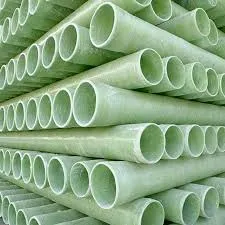
-
 Afrikaans
Afrikaans -
 Albanian
Albanian -
 Amharic
Amharic -
 Arabic
Arabic -
 Armenian
Armenian -
 Azerbaijani
Azerbaijani -
 Basque
Basque -
 Belarusian
Belarusian -
 Bengali
Bengali -
 Bosnian
Bosnian -
 Bulgarian
Bulgarian -
 Catalan
Catalan -
 Cebuano
Cebuano -
 China
China -
 China (Taiwan)
China (Taiwan) -
 Corsican
Corsican -
 Croatian
Croatian -
 Czech
Czech -
 Danish
Danish -
 Dutch
Dutch -
 English
English -
 Esperanto
Esperanto -
 Estonian
Estonian -
 Finnish
Finnish -
 French
French -
 Frisian
Frisian -
 Galician
Galician -
 Georgian
Georgian -
 German
German -
 Greek
Greek -
 Gujarati
Gujarati -
 Haitian Creole
Haitian Creole -
 hausa
hausa -
 hawaiian
hawaiian -
 Hebrew
Hebrew -
 Hindi
Hindi -
 Miao
Miao -
 Hungarian
Hungarian -
 Icelandic
Icelandic -
 igbo
igbo -
 Indonesian
Indonesian -
 irish
irish -
 Italian
Italian -
 Japanese
Japanese -
 Javanese
Javanese -
 Kannada
Kannada -
 kazakh
kazakh -
 Khmer
Khmer -
 Rwandese
Rwandese -
 Korean
Korean -
 Kurdish
Kurdish -
 Kyrgyz
Kyrgyz -
 Lao
Lao -
 Latin
Latin -
 Latvian
Latvian -
 Lithuanian
Lithuanian -
 Luxembourgish
Luxembourgish -
 Macedonian
Macedonian -
 Malgashi
Malgashi -
 Malay
Malay -
 Malayalam
Malayalam -
 Maltese
Maltese -
 Maori
Maori -
 Marathi
Marathi -
 Mongolian
Mongolian -
 Myanmar
Myanmar -
 Nepali
Nepali -
 Norwegian
Norwegian -
 Norwegian
Norwegian -
 Occitan
Occitan -
 Pashto
Pashto -
 Persian
Persian -
 Polish
Polish -
 Portuguese
Portuguese -
 Punjabi
Punjabi -
 Romanian
Romanian -
 Russian
Russian -
 Samoan
Samoan -
 Scottish Gaelic
Scottish Gaelic -
 Serbian
Serbian -
 Sesotho
Sesotho -
 Shona
Shona -
 Sindhi
Sindhi -
 Sinhala
Sinhala -
 Slovak
Slovak -
 Slovenian
Slovenian -
 Somali
Somali -
 Spanish
Spanish -
 Sundanese
Sundanese -
 Swahili
Swahili -
 Swedish
Swedish -
 Tagalog
Tagalog -
 Tajik
Tajik -
 Tamil
Tamil -
 Tatar
Tatar -
 Telugu
Telugu -
 Thai
Thai -
 Turkish
Turkish -
 Turkmen
Turkmen -
 Ukrainian
Ukrainian -
 Urdu
Urdu -
 Uighur
Uighur -
 Uzbek
Uzbek -
 Vietnamese
Vietnamese -
 Welsh
Welsh -
 Bantu
Bantu -
 Yiddish
Yiddish -
 Yoruba
Yoruba -
 Zulu
Zulu
frp blind flange
Understanding FRP Blind Flanges A Comprehensive Overview
In the realm of industrial applications and systems mechanics, blind flanges serve a crucial role, particularly in piping systems. Among various materials used for manufacturing these essential components, Fiber Reinforced Plastic (FRP) blind flanges have gained significant attention due to their unique properties and advantages.
What is a Blind Flange?
Blind flanges are solid circular discs used to seal the ends of pipes, valves, or other equipment. Unlike standard flanges, which typically have a hole in the center for pipe connections, blind flanges do not. This design feature makes them indispensable for terminating lines, providing access to the inside of the piping system for maintenance, and allowing for future connections if necessary.
The Advantages of FRP Blind Flanges
1. Corrosion Resistance One of the primary benefits of FRP materials is their outstanding resistance to corrosion. Traditional metal flanges, while strong, may succumb to rust and degradation over time, particularly in harsh environments. FRP blind flanges, being non-metallic, do not corrode, making them ideal for chemical processing, marine environments, and any application where corrosive substances are present.
2. Lightweight FRP materials are significantly lighter than metals, which reduces the overall weight of piping systems. This advantage simplifies installation and handling, as well as reduces the load on supporting structures, which can be particularly beneficial in large-scale industrial settings.
3. Versatility and Customization FRP blind flanges can be manufactured in various shapes, sizes, and thicknesses to meet specific requirements. This versatility allows engineers and designers to create customized solutions tailored to the unique demands of their projects.
frp blind flange

4. Thermal Insulation With low thermal conductivity, FRP materials offer excellent thermal insulation properties. This characteristic helps in maintaining the temperature of the fluid within the pipe, which can improve process efficiency and reduce energy costs.
5. Cost-Effectiveness While the initial investment for FRP products may be higher than traditional materials, their durability and maintenance-free nature lead to lower life-cycle costs. This reality makes FRP blind flanges a cost-effective choice in the long run, particularly in corrosive or challenging environments.
Applications of FRP Blind Flanges
FRP blind flanges are widely used across various industries, including
- Chemical Processing Their resistance to corrosive substances makes FRP flanges an excellent choice for chemical storage and processing systems. - Water Treatment In municipal and industrial water systems, where corrosion and chemical exposure are prevalent, FRP blind flanges provide reliable sealing solutions. - Oil and Gas In offshore and onshore applications, the lightweight nature and resistance to environmental factors make FRP blind flanges suitable for piping systems in oil and gas extraction.
Conclusion
In summary, FRP blind flanges represent a robust and versatile component in modern piping systems. Their superior resistance to corrosion, combined with lightweight properties and excellent thermal insulation, makes them a preferred choice in various demanding applications. As industries continue to seek solutions that enhance efficiency and reduce maintenance costs, the adoption of FRP materials is likely to grow, securing a prominent role in future engineering designs. Whether in chemical processing, water treatment, or oil and gas industries, FRP blind flanges stand out as a sophisticated solution for sealing and protecting piping systems.
Latest news
-
Exploring the Benefits of Top Hammer Drifter Rods for Enhanced Drilling PerformanceNewsJun.10,2025
-
High-Precision Fiberglass Winding Machine for GRP/FRP Pipe Production – Reliable & Efficient SolutionsNewsJun.10,2025
-
FRP Pipes & Fittings for Shipbuilding - Corrosion-Resistant & LightweightNewsJun.09,2025
-
Premium FRP Flooring Solutions Durable & Slip-ResistantNewsJun.09,2025
-
Premium Fiberglass Rectangular Tanks Durable & Lightweight SolutionNewsJun.09,2025
-
Tapered Drill String Design Guide Durable Performance & UsesNewsJun.09,2025









